#180: Pleurotoid Mushrooms
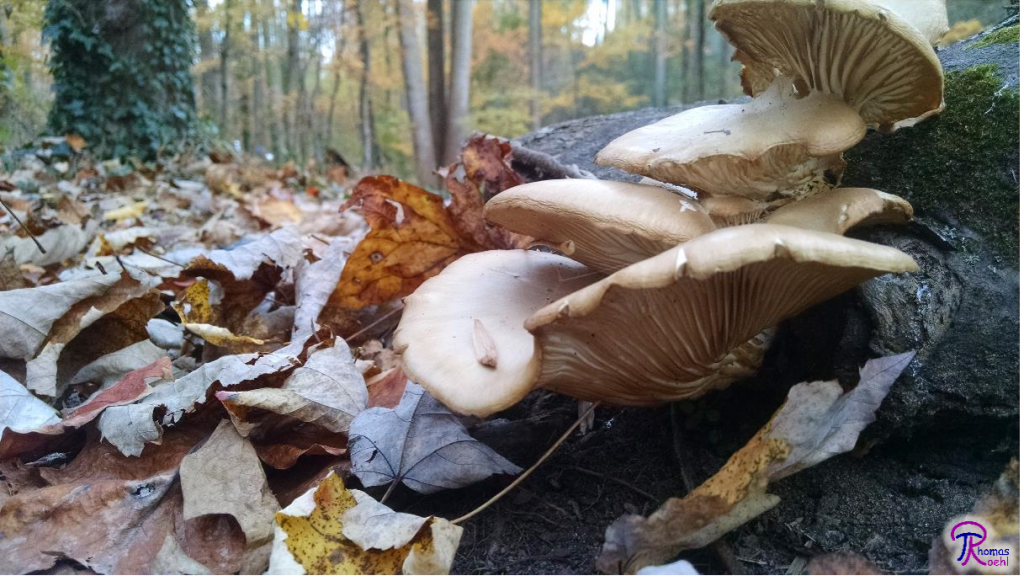
Pleurotus ostreatus is the typical pleurotoid mushroom: it has decurrent gills and a rudimentary stipe.
Pleurotoid mushrooms are agarics that have a single common feature: they lack a well-developed stipe. Originally, I was not going to include pleurotoid mushrooms as a distinct agaric morphology. Their other physical characteristics vary widely and they belong to multiple unrelated taxonomic groups. To anyone classifying mushrooms, grouping them based on pleurotoid growth is decidedly unhelpful. However, it is a useful group from a field guide standpoint because it quickly reduces the number of possible matches. Eventually, I decided to discuss the pleurotoid mushrooms because they are often mentioned in field guides and because “pleurotoid” is a commonly-used mushroom descriptor.1
Description
The word “pleurotoid” means “like Pleurotus” and references the Oyster Mushroom, Pleurotus ostreatus (FFF#021). The Oyster Mushroom is the quintessential pleurotoid mushroom: it grows on wood, lacks a well-developed stipe, and has decurrent gills that run all the way down to the substrate. Aside from this, pleurotoid mushrooms are very diverse in terms of color, size, texture, etc. Even gill morphology can be variable: Panellus stipticus (FFF#154) has gills that are distinctly attached to its short stipe and Lentinellus ursinus produces gills with a serrated edge.2
What shape a pleurotoid mushroom develops often depends upon where it is growing. Pleurotoid mushrooms growing on the side of their substrate usually lack a stipe or produce a very small stipe. The diminutive stipe serves only to anchor the mushroom to its substrate. Because they cannot grow behind the stipe, mushrooms in this orientation often produce a fan-shaped pileus. Sometimes, pleurotoid mushrooms will grow on top of a log, which forces them to change their morphology slightly. In this case, they often grow a longer but still rudimentary stipe that lifts the gills above the surface. With more room to grow, these mushrooms will often become kidney-shaped to nearly circular.1 Occasionally, you will find a pleurotoid mushroom on the bottom of its substrate. These mushrooms often produce no stipe and a reduced pileus. They will frequently produce little more than a kidney-shaped to circular area of gills extending out from a central or off-center depression where the stipe would normally be found.
The term “pleurotoid” is rather subjective and different field guides treat the group differently. Some take a more taxonomic approach and don’t include pleurotoid mushrooms as a separate group. Among the guides that do distinguish them, there is still some disagreement as to whether or not Crepidotus species (FFF#179) should be considered pleurotoid. Some include the group based on the presence of gills and the lack of a stipe, while others exclude the genus based on its dark spore print.1–3
As I see it, pleurotoid mushrooms are a morphological group that exists solely to simplify the identification process. The smaller pleurotoid mushrooms can look a lot like Crepidotus species (for example: Pleurocybella porrigens and Crepidotus vulgaris), so it would be most helpful to list them in the same section. For this reason, I consider Crepidotus to be pleurotoid.
When Crepidotus is included, spore print color ceases to be a unifying feature for pleurotoid mushrooms. Aside from Crepidotus, most pleurotoid mushrooms have white or pale spore prints. Spores of the Oyster Mushroom, for example, range from white to pinkish white.2 The mushrooms with more highly-colored spores still produce spore print colors on the lighter side of the spectrum. For example: Phyllotopsis nidulans has light reddish spores and Panellus serotinus produces a yellow spore print.3 Crepidotus species break this general rule and produce brown spores.1
Ecology
Pleurotoid mushrooms always grow on wood. This makes sense because the primary purpose of a stipe is to lift the spore-producing surface above the ground. With a stipe, terrestrial gilled mushrooms can be sure that a lot of their spores will drop into air currents and be carried off by the wind and not dropping to the ground directly beneath the mushroom. However, mushrooms growing on large pieces of wood often find themselves above the ground already. In this case, growing a stipe does not make much difference: either way, spores will end up dropping into air currents. Pleurotoid mushrooms take advantage of this by growing as short a stipe as possible. Forming a shorter stipe requires less energy, so the mushroom can devote more energy to spore production.
So if pleurotoid mushrooms always grow on wood, does that mean they are all saprobic? For temperate areas, the answer is yes. In North America, all our pleurotoid mushrooms decompose wood. You can find them on both hardwood and conifer logs, although any given species usually prefers one or the other.3
However, pleurotoid ecology is much more complicated in tropical ecosystems. Researchers cataloging fungi in tropical rainforests recently discovered that in those habitats, many mycorrhizal fungi produce pleurotoid mushrooms. Tropical rainforests are extremely efficient ecosystems. Because of the density of life and the speed of nutrient cycling, most forest debris never reaches the ground. Instead, branches or exposed roots of understory plants catch the debris and it mostly decomposes there. Consequently, the soil in a rainforest is very thin and plants have to look elsewhere to find nutrients. To access the nutrients stored in detritus, plants actually have to grow roots up the sides of nearby trees. As a result, mycorrhizal fungi in rainforests primarily live on the sides of trees and extract nutrients stored in detritus caught in tree branches. Many of these mushrooms have developed pleurotoid growth even though they are not decomposing the wood on which they fruit.4,5
Edibility
Because of the immense diversity of the group, edibility of pleurotoid mushrooms is best discussed at the level of species. The group includes some good edibles, most notably the Oyster Mushroom. The vast majority of pleurotoid mushrooms, including the Crepidotus species, are considered nonpoisonous but inedible. In the case of Crepidotus, this is mostly because the mushrooms are too small and thin-fleshed. The pleurotoid Lentinellus ursinus, on the other hand, is too bitter to be edible.2 There is also at least one poisonous mushroom: Pleurocybella porrigens. This mushroom was considered edible until recently, when a lot of people in Japan got sick and a few died after eating the mushroom in large amounts.6 As always, check a field guide before you eat any pleurotoid mushroom.
Taxonomy
As the above discussion of ecology explains, any gilled mushroom can evolve a pleurotoid morphology so long as it grows far enough above the ground. Mushrooms from multiple taxonomic lineages have developed pleurotoid habits, from Pleurotus and Crepidotus to Schizophyllum and even Russula.1,7 These mushrooms are distributed among at least three orders and nine families, so there is no way to consider them a coherent taxonomic group. For a taste of the taxonomic diversity of pleurotoid mushrooms, see the table below (mushrooms listed for species are all pleurotoid mushrooms).
| Kingdom | Fungi | ||||||||
| Division | Basidiomycota | ||||||||
| Subdivision | Agaricomycotina | ||||||||
| Class | Agaricomycetes | ||||||||
| Subclass | Agaricomycetidae | [unspecified] | [unspecified] | ||||||
| Order | Agaricales | Russulales | Polyporales | ||||||
| Family | Pleurotaceae | Inocybaceae | Schizophyllaceae | Mycenaceae | Marasmiaceae | Tricholomataceae | Russulaceae | Auriscalpiaceae | Polyporaceae |
| Genus | Pleurotus | Crepidotus | Schizophyllum | Panellus | Pleurocybella | Resupinatus | Lactifluus | Lentinellus | Panus |
| Species | Pleurotus ostreatus1,8 | Crepidotus vulgaris1,9 | Schizophyllum commune1,10 | Panellus stipticus1,11 | Pleurocybella porrigens3,12 | Resupinatus alboniger1,13 | Lactifluus panuoides7,14 | Lentinellus ursinus1,15 | Panus conchatus3,16 |
This post describes a group of mushrooms and as such the information on this page (including the pictures) cannot be used to identify any mushroom in particular.
This post does not contain enough information to positively identify any mushroom. When collecting for the table, always use a local field guide to identify your mushrooms down to species. If you need a quality, free field guide to North American mushrooms, I recommend Michael Kuo’s MushroomExpert.com. Remember: when in doubt, throw it out!
See Further:
http://www.mushroomexpert.com/pleurotoid.html
http://www.svims.ca/council/Pleuro.htm
http://tropicalfungi.org/special-notes-on-fruiting-habit/ (on the unusual fruiting habits of mushrooms in tropical rainforests)
Citations
- Kuo, M. Oysters: Pleurotoid Mushrooms. MushroomExpert.Com (2005). Available at: http://www.mushroomexpert.com/pleurotoid.html. (Accessed: 10th March 2017)
- Miller, O. K. & Miller, H. North American mushrooms: a field guide to edible and inedible fungi. (Falcon Guide, 2006).
- Brown, D. E. Trial field key to the PLEUROTOID SPECIES in the Pacific Northwest. Pacific Northwest Key Council (2003). Available at: http://www.svims.ca/council/Pleuro.htm. (Accessed: 10th March 2017)
- Aime, M. C. Mushrooms of the Guiana Shield. (2015).
- McCoy, N. L. Special Notes On Fruiting Habit. Macrofungi of the Guiana Shield
- Beug, M. W. Pleurocybella porrigens toxin unmasked? North American Mycological Association Available at: http://www.namyco.org/pleurocybella_toxin.php. (Accessed: 10th March 2017)
- Buyck, B. & Horak, E. New Taxa of Pleurotoid Russulaceae. Mycologia 91, 532–537 (1999).
- Pleurotus ostreatus. Mycobank Available at: http://www.mycobank.org/BioloMICS.aspx?TableKey=14682616000000067&Rec=22136&Fields=All. (Accessed: 10th March 2017)
- Crepidotus vulgaris. Mycobank Available at: http://www.mycobank.org/BioloMICS.aspx?TableKey=14682616000000067&Rec=277265&Fields=All. (Accessed: 10th March 2017)
- Schizophyllum commune. Mycobank Available at: http://www.mycobank.org/BioloMICS.aspx?TableKey=14682616000000067&Rec=24763&Fields=All. (Accessed: 10th March 2017)
- Panellus stipticus. Mycobank Available at: http://www.mycobank.org/BioloMICS.aspx?TableKey=14682616000000067&Rec=18373&Fields=All. (Accessed: 10th March 2017)
- Pleurocybella porrigens. Mycobank Available at: http://www.mycobank.org/BioloMICS.aspx?TableKey=14682616000000067&Rec=22068&Fields=All. (Accessed: 10th March 2017)
- Resupinatus alboniger. Mycobank Available at: http://www.mycobank.org/BioloMICS.aspx?TableKey=14682616000000067&Rec=30689&Fields=All. (Accessed: 10th March 2017)
- Lactifluus panuoides. Mycobank Available at: http://www.mycobank.org/BioloMICS.aspx?TableKey=14682616000000067&Rec=545598&Fields=All. (Accessed: 10th March 2017)
- Lentinellus ursinus. Mycobank Available at: http://www.mycobank.org/BioloMICS.aspx?TableKey=14682616000000067&Rec=14126&Fields=All. (Accessed: 10th March 2017)
- Panus conchatus. Mycobank Available at: http://www.mycobank.org/Biolomics.aspx?Table=Mycobank&Rec=18391&Fields=All. (Accessed: 10th March 2017)

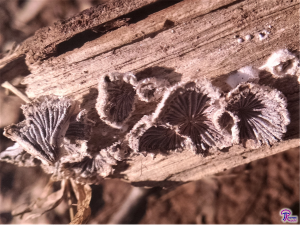
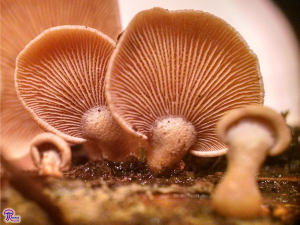
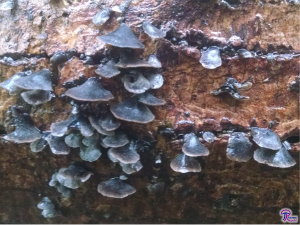
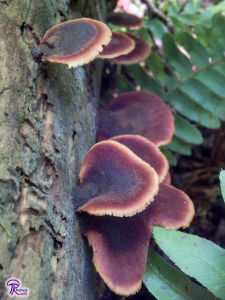
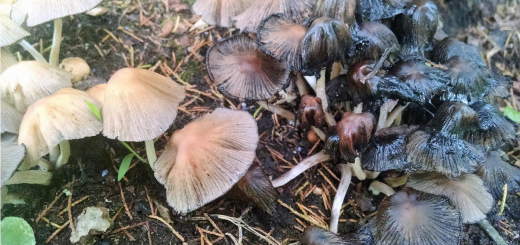
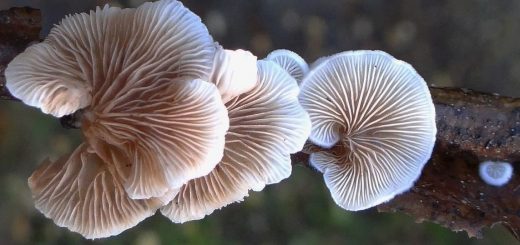






![#011: Characteristics of Kingdom Fungi [Archived]](https://www.fungusfactfriday.com/wp-content/themes/hueman/assets/front/img/thumb-small-empty.png)

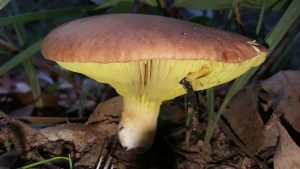
3 Responses
[…] Most Entolomataceae are umbrella-like, with a circular pileus, a centrally located stipe, and gills that radiate out from the stipe. However, some species have an off-center stipe or are pleurotoid (see FFF#180).1,2 […]
[…] Pleurotoid11,17,18 […]
[…] ostreatus, the “Oyster Mushroom,” is the quintessential pleurotoid mushroom: it is a gilled mushroom with a very short stalk that fruits from the sides of logs. […]